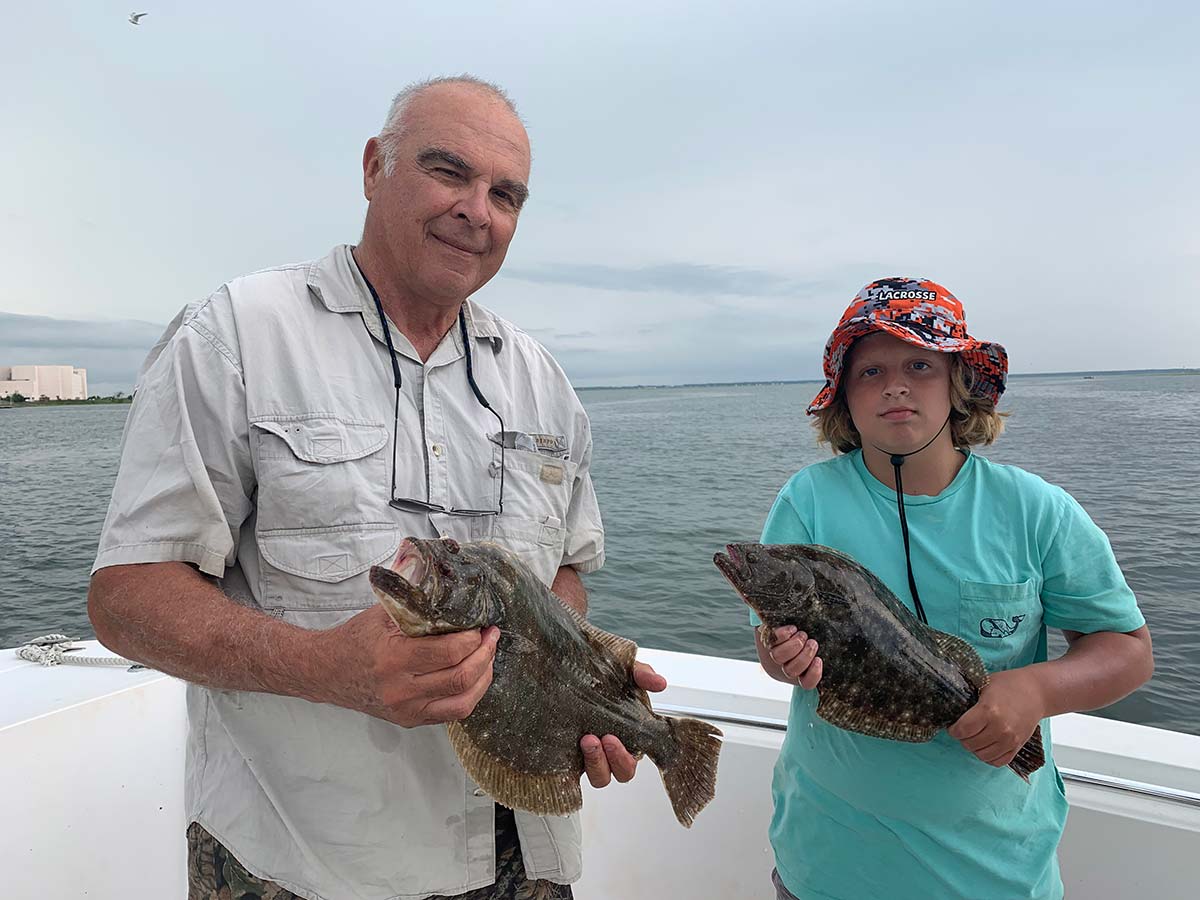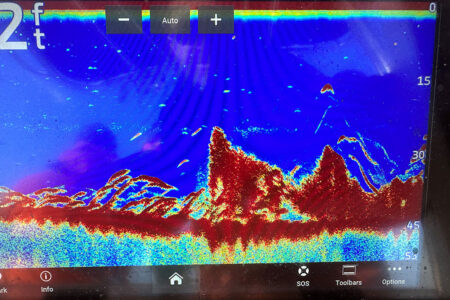
Break down your favorite fluke spots even further for more success.
Highly observant anglers often catch exponentially better than passive fishermen because they strive to put the right bait in the right places. And while doing half-mile drifts can yield some keepers, the captains that learn the underwater topography and how to fish spots within the spots have the upper hand at the cleaning table.
In the backwaters, fluke proliferate sounds, bays, creeks, channels and inlets. Although there can be a random nature to how they station themselves, the keepers and doormats will find refuge in the best possible places to seek forage. Thus, when a captain drifts a channel, and they note when the same stretch of water produces quality fish, they should, in turn, cut down the length of the drift and focus on the area where the keepers are caught. Sometimes, it might simply be one side of a waterway because bait is located there; in other instances, the fluke might prefer one slope on the contour versus another.
Structure does exist in the nursery waters. Shell beds, rocks, concrete and bridges are common forms found “inside.” Drifts that specifically pass over and around these features will produce more fish. Often there are fluke flanking these structures making for a potential benthic bonanza provided anglers take the time to see where the best patches of fluke are laying. Within and downstream of structure is the most likelym/ location to find fish. But the sandy sides of structure are worthy of attention as well. Trolling motors really help concentrate the drifts. The task can be accomplished nonetheless with an aggressive notion toward staying right where the big fish bites are coming. At the start of an outing, I might drift 100 yards over fluke turf; however, I have it down to 100 feet by the end of the day.
Fluke fishing on the Atlantic is no different than the estuaries in terms of honing in on spots within spots. Wrecks, reefs, rocks, and shoals are key components in doormat hunting. Not every part of a wreck holds fluke. Vertical metal isn’t as good as horizontal, but low profile wreckage allows fluke to lie and wait for a passing meal. Add the sand bottom immediately adjacent to the areas that should be short-drifted once the sweet spot is determined. Furthermore, giant wheelhouses and highly elevated structures eat jigs and bucktails, resulting in unnecessarily lost tackle. Back trolling with the main engine or using the trolling motor when the drift is swift will keep anglers in the red zone.
Reefs often include concrete, tanks, subway cars, and reef balls laid out individually or in clusters. Many folks love the long drifts that produce fish along the way, but intense fluke fishermen will mark the areas producing and gradually begin only fishing the small segments. This could be a cluster of reef balls or a small gathering of tires, but pinpoint drifts over exact spots will produce once located. Serious charter captains have marked spots within the overall reefs to strategically present a bait to each while they visit a site.
Rock and glacial hard bottom can span for acres over the ocean floor in the Northeast, which is terrific news for summer flounder pounders. Again, anglers should pay careful attention where fish are caught and use their backtrack feature to repeat the drift while they mark places along the way that seem worth a concentrated effort. The front and back ends of the drift should be reduced so that only fruitful waters see effort. No time should be wasted on lesser grounds!
Shoals that contain dimples, slopes, ridges, and plateaus are common in the Northeast. Often the fluke will pile up on one piece of terrain versus another. If captains can drift along that specific terrain, they can clean up. Conversely, if they drift perpendicular to the feature, they may have to do very short drifts or back-troll to hold over the spot within the hot zone.
Knowing how to identify hard bottom, structure and sloping bottom on the sounder is crucial. Modern technology helps astute anglers see and learn what kind of bottom they are fishing. Marking spots, creating custom drift plans and using backtrack functions are beneficial. Boats not equipped with standard GPS technology can still drop a buoy on the productive area to help start, finish and shorten drifts over the fertile bottom. Long, lazy day drifts will catch some fish, but to take summer flounder fishing to the next level, healthy aggression toward staying in the prime, productive zone is essential.




